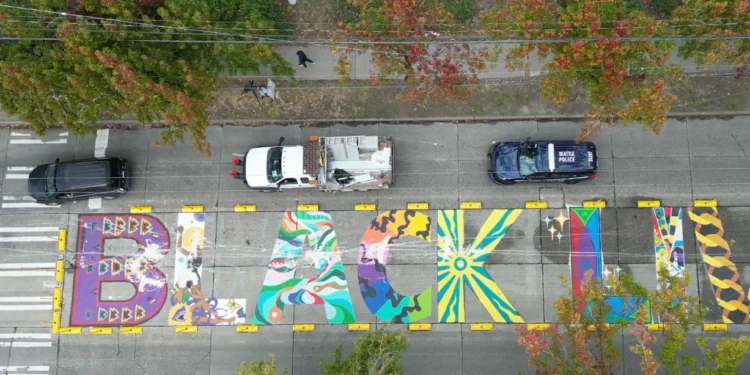The ‘Black Lives Matter’ mural in Seattle’s Capitol Hill neighborhood suffered significant damage after someone threw white paint across it, marking the largest act of vandalism since the mural’s 2020 creation.
Artists who maintain the mural said they have noticed smaller vandalism acts in recent months, but nothing approaching the current damage scale.
“All the artists are shocked, we’re heartbroken,” said Takiyah Ward, co-founder of the Vivid Matter Collective. Ward and 16 other artists maintain the mural five years after it was first painted during the Capitol Hill Occupied Protest (CHOP) zone in 2020.
“This mural here in Seattle is one of the only ones left in the country from that time,” she said. “This is our activism, this is our protest, we chose to protest through paint, and we will continue to do that.”
The group recently repainted the mural in mid-September. The Seattle Department of Transportation believes the vandalism occurred within days of the repainting.
SDOT works with Ward and the other artists to clean and maintain the mural, which is protected with plastic barriers on Pine Street.
A note was found near the vandalism scene making statements about “Black criminals” and accusing Black people of not caring about the “murder of innocent Jews.”
“Whoever wrote it definitely has a lot of things on their mind, things on their heart,” Ward said. “It doesn’t speak to any of us or any of the work we do at all.”
SDOT provided this statement: “We’re working closely with Vivid Matter Collective to restore the artwork as soon as possible. The artists were onsite today to assess the damage, and our crews are coordinating cleanup efforts that will include hydro-blasting and pressure washing to remove the paint. SDOT remains committed to preserving this important piece of public art and ensuring it continues to be a space of pride and reflection for the community.”
The vandalism adds to ongoing debates about public art preservation and the role of street murals as political expression in Seattle. The mural has become a landmark in Capitol Hill, surviving years longer than similar murals created in other cities during 2020 protests.







